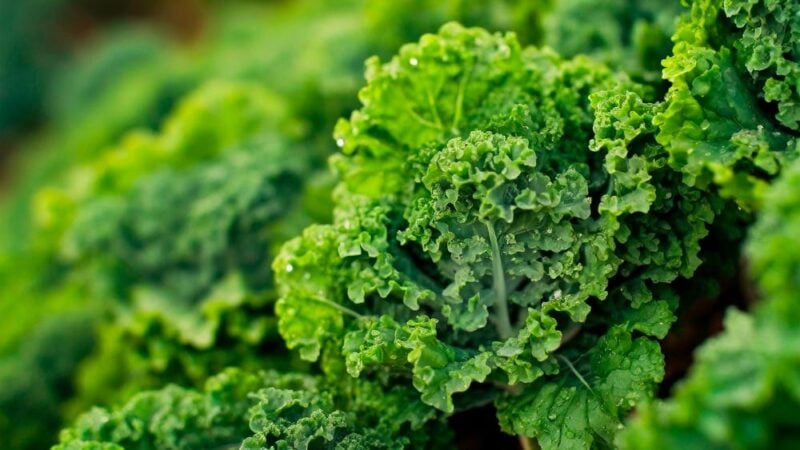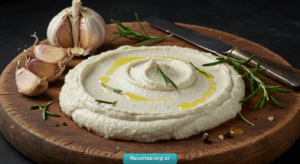
If you were looking for a noble, adaptable and nutritious vegetable to incorporate into meals, the Kale Is the best option. It became fashionable as a superfood, a concept used in marketing strategies to talk about foods that provide more benefits to human health than the rest. Added to this is that you can consume in many different ways and due to the popularity obtained, recipes of all colors proliferated.
Truly, this little plant for some time now became a symbol of healthy eatingWe can even use it to make snacks, did you know? Can you imagine? It is not necessary because in this post we are going to share with you the best recipe to do it, get the pleasure out of it and snack without guilt. We strongly recommend that you save this post and share it with those you know who you love very much.
About Kale
He kale is a green leafy vegetable which belongs to the Brassicaceae family, known for its rich nutritional composition. Its scientific name is Brassica oleracea var. saberlica and is characterized by curly or smooth leaves of intense green color. This vegetable is recognized for its exceptional vitamin content.
It is native to the Mediterranean region and is characterized by being a resistant plant that adapts to different climates and soils. This has facilitated its cultivation in various regionswhich contributes to its global availability for much of the year.
They are low temperature resistance allows this vegetable to be present in markets and health food stores around the world, providing a healthy and tasty option for anyone who wants to try it.
The flavor of Kale leaves and their contribution to cooking
Kale is versatile in the kitchen and can be consumed in various ways. Can be added raw to salads, steaming, sautéing or incorporated directly into soups and stews.
Its slightly bitter flavor and robust texture make it compatible with a variety of dishes, making it a popular option for those looking for a balanced diet.
Its leaves are recognized for their intense green color and rough texture. They are divided into several varieties, the most common being curly kale and smooth-leaf kale. His taste is slightly bitter and can vary depending on the variety and growing conditions.
From the Mediterranean to the world, a culinary journey
This is known to be a food originating from the Mediterranean, but until now kale has been quite the world traveler. Imagine, from the salads of ancient Greece and Rome to the gourmet dishes of today, he did more sightseeing than all of us.
Over time it planted its roots (literally) all over the world, adapting to a wide variety of climates from temperate to cool Nordic climates. Its ease of cultivation almost anywhere has allowed it to be a frequent guest on the tables of countless cultures.
- In GermanyFor example, it is very common to see it as main protagonist in a dish called “Grünkohl” which is enjoyed in winter, accompanied by sausages and potatoes. But then cross the Atlantic and you find it being the king of green smoothies in the US., promoting active and healthy lifestyles.
And it doesn’t stop there. In Corea is part of the local cuisine in innovative ways, from Juices up shining in fresh salads. Each country gives it its own special touch, whether cooked, fried, steamed or even fermented.
Do you know the best way to consume Kale?
The choice between consuming it raw or cooked It depends on personal preferences and nutritional goals. Both forms of preparation offer health benefits, although with some key differences.
Consume kale raw preserves its maximum nutritional content, since no heat-sensitive nutrients are lost during cooking. Besides, Its firm, crunchy texture adds an interesting dimension to salads and smoothies like green juice. Besides, cook it can reduce its bitter tastewhich may make it more palatable to some people.
Kale, kale, curly cabbage… A plant with many names
In Argentina, the Kale is commonly known as “kale” or, in some cases, “crisp cabbage.” Although not as popular as in some other regions, kale has gained recognition in recent years due to growing awareness of the importance of healthy eating.
The denomination “kale” has remained to refer to this specific variety of kalebeing used both in the culinary field and in the promotion of healthy lifestyles, according to health specialists.
He kale, the col rizada, is appreciated in Argentina for its nutritional profile. Its versatility in the kitchen allows its inclusion in salads, soups, green smoothies and other dishes.
Types and varieties of kale plants
There are many varieties of this vegetable, each with unique characteristics in terms of taste, texture and appearance. He “Curly Kale” is perhaps the most common, with leafy, curly leaves that provide a robust texture.
On the other hand, the “Smooth Leaf Kale” presents a softer and more tender surface. To variants “Dinosaur Kale” o “Lacinate” has darker, flatter leavesoften associated with a sweeter and less bitter taste compared to other varieties.
In addition to differences in leaf shape, there are varieties that exhibit a wide range of colors. He “Purple Kale” stands out for its vibrant hue, adding visual appeal to dishes and gardens.
Follow me on Instagram (here)
And on YouTube I upload new recipes every week (click here)
5 ideas for using kale
- Energizing Kale and Avocado Salad: combines fresh leaves massaged with olive oil, diced avocado, cherry tomatoes and pumpkin seeds. Dress with a lemon-honey vinaigrette for a vibrant salad.
- Baked chips: Simply toss the leaves with olive oil, spread on a tray and bake until crispy. They are a healthy appetizer or topping for soups and salads.
- Chips the kale: Wash and dry the leaves well. Place them on a plate with absorbent paper underneath and microwave them for 2 minutes at maximum power.
- Revitalizing green smoothie: Mix the fresh leaves with banana, pineapple and coconut water to obtain a green and refreshing smoothie. Ideal as breakfast or snack.
- Tacos with avocado: sauté the leaves with garlic and serve in corn tortillas with avocado, tomato and lemon. A healthy and delicious version of tacos, perfect for a light dinner full of flavor.

Source: www.paulinacocina.net


